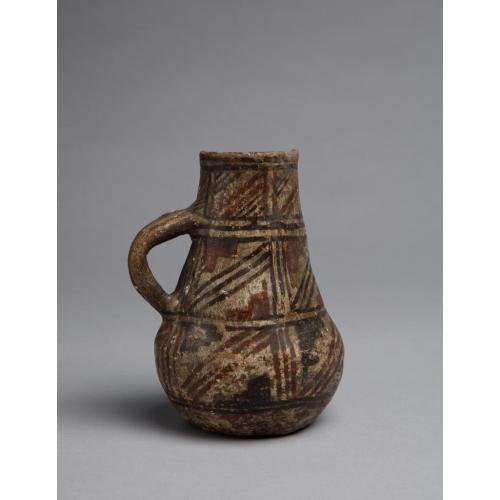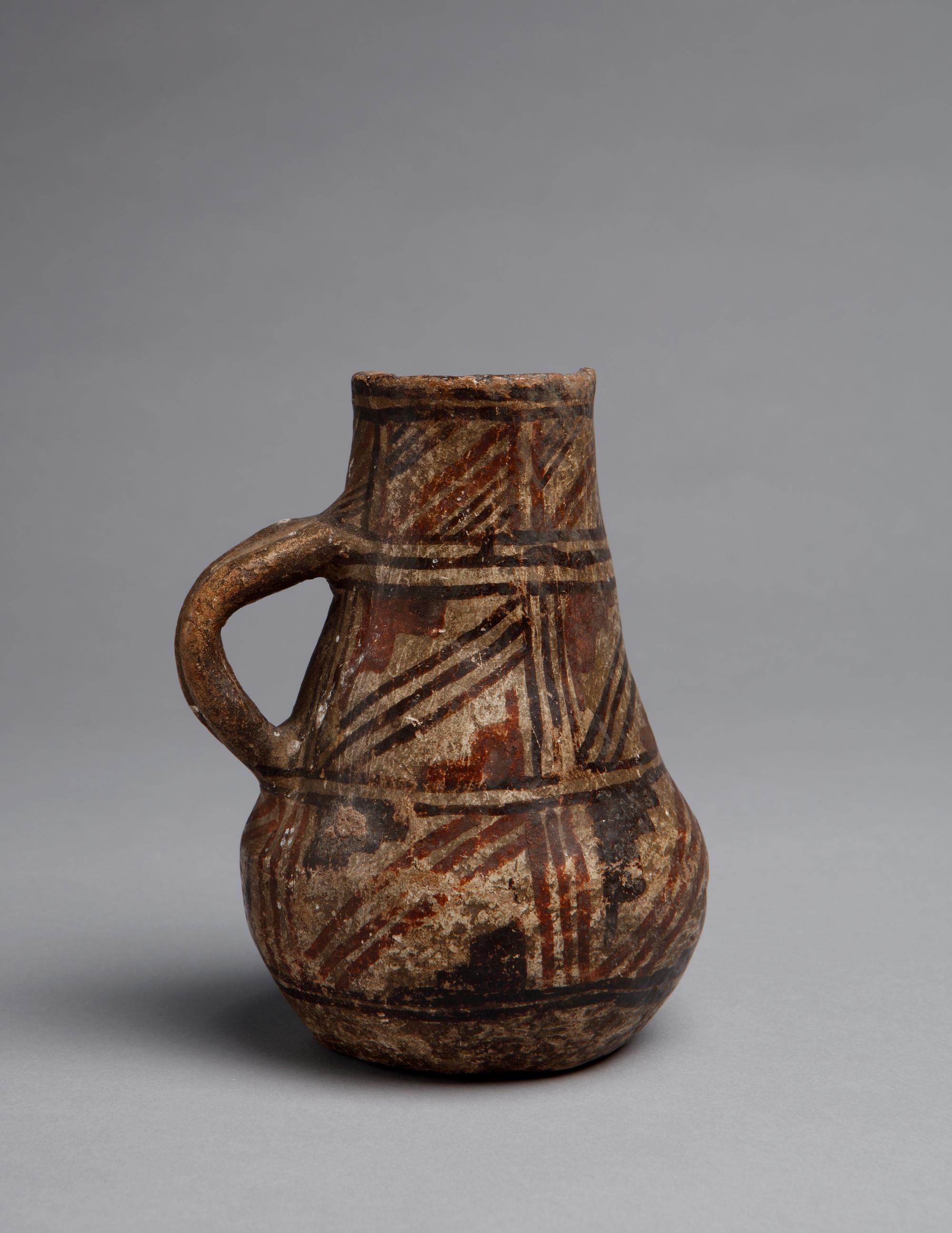
Photograph by Addison Doty. Copyright 2015 School for Advanced Research.
Pitcher
Date: before 1928
Artist or Maker: Unknown
Dimensions:
Dimensions: 13.5 × 10 cm (5 5/16 × 3 15/16 in.)
Weight: 0.2 kg (0.5 lb.)
Medium: clay | paints
Credit Line: Gift of the Spanish and Indian Trading Company.
Place Made:
Zuni Pueblo, New Mexico, Southwest, United States, North America
Object Number: IAF.1020
Not on view
Tribal Collection Review RemarksJim Enote and Octavius Seowtewa during collection review visit June 20 and 21, 2012 (Events Record “Collection Review: Zuni Tribe, Review 8”): This piece was originally cataloged in the IAF Pottery Catalog as Zuni, then the designation was changed at some point to Acoma, for reasons unknown. Mr. Enote and Mr. Seowtewa both were of the opinion that it is most likely Zuni and not Acoma. They have seen several similar examples from Ketchipawan at the American Museum of Natural History in New York. Those pieces have similar forms and painted designs. They have seen some that were made in pieces and then put together. This piece may have been made that way. The tool that was used to make it left marks on the interior. This piece may be a Ketchipawan pitcher, or it might have been made to mimic one. Hawiku and Ketchipawan were being excavated in the early 1920s.
The pitcher is decorated with three horizontal bands of rain cloud and rain designs painted in black and red. The first horizontal band contains rain lines. The second and third bands contain step clouds and rain lines. The bottom of the pitcher is flat. The piece didn’t have a date of manufacture listed in the catalog, so they suggested a possible date of late 1800s to early 1900s.
According to the participants in the Acoma collection review visit February 17-19, 2016 (Events Record “Collection Review: Acoma Pueblo Review 5”): The clay is a brownish red color. There is no known clay of this color found at Acoma. The participants all agree that this is not Acoma and likely Zuni.
In Collection(s)
The Indian Arts Research Center, in collaboration with Native American community scholars, strives to present accurate collections records. Records may be updated as new information becomes available and is reviewed with the Native American community having cultural affinity to particular items. Please write to iarc@sarsf.org if you have questions or concerns related to the documentation.


